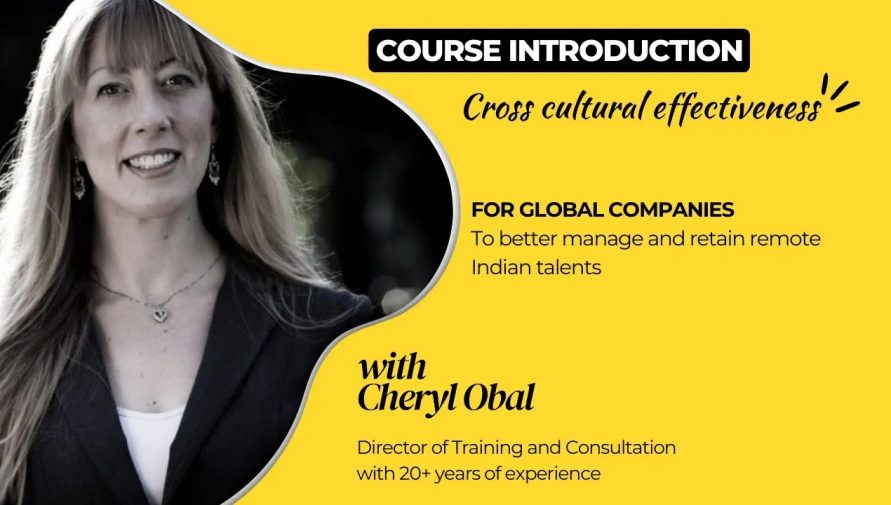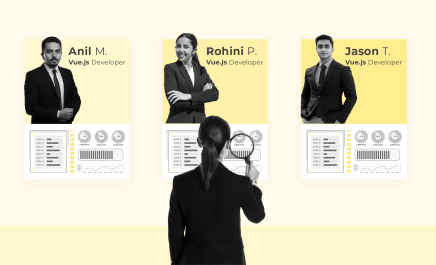The Power of Cross-Cultural Collaboration: A Guide to Working with Indian Professionals by Cheryl Obal
- Anwesha Roy
- November 6, 2024
- 4 Minute Read

In today’s interconnected world, startups and businesses are no longer limited by geography. Hiring global talent, especially from countries like India, has become a powerful strategy for scaling businesses efficiently. However, working across cultures brings unique challenges—differences in communication styles, work ethics, and expectations can sometimes lead to misunderstandings.
To address these challenges, Cheryl Obal, a culture and communication expert, partnered with Uplers to develop a step-by-step tutorial designed to help businesses build strong, productive relationships with Indian talent.
Working with global talent can be an enriching experience, offering new perspectives & expertise. In her video series, Cheryl Obal , a cross-cultural trainer and consultant, shares practical tips for building effective relationships with Uplers talent from India. This series covers key insights into Indian culture, communication styles, and best practices for working with virtual teams. Let’s dive into the main takeaways from each lesson.
As Cheryl explains, “This course is designed to help you understand cultural nuances, establish trust, and set up an effective working relationship with your Indian talent.”
Through this structured tutorial, we will walk through key lessons that equip startups with practical strategies to collaborate seamlessly with Indian professionals.
Lesson 1: Understanding Indian Work Culture
India’s Talent Advantage
India is a global leader in outsourcing and technology, with a $150 billion IT industry and a workforce known for its technical expertise, adaptability, and problem-solving skills. Cheryl highlights:
- “Indian professionals bring world-class technical expertise, a flexible mindset, and an ability to self-instruct, which makes them perfect for fast-paced industries.”
- “If you need them to learn a new skill, you can count on them to figure it out quickly.”
But beyond technical skills, India’s work culture is deeply influenced by its social values. Indian professionals often approach work with:
✔ A collectivist mindset—Team harmony and relationships are prioritized over individualism.
✔ A high-context communication style—Understanding implicit messages is key.
✔ A flexible approach to time—Workflows are adjusted based on priorities rather than strict schedules.
Lesson 2: Communication and Building Trust
High-Context vs. Low-Context Communication
One of the biggest challenges in cross-cultural collaboration is communication differences. Cheryl explains, “India is a high-context culture, meaning communication is often indirect, relying on tone, gestures, and implied meanings.”
In contrast, Western cultures often follow a low-context communication style, where messages are clear, direct, and detailed. This can lead to misunderstandings when working with Indian talent.
To build effective communication, Cheryl suggests:
✔ Prioritizing face-to-face interactions: “Face-to-face meetings are crucial because they help establish rapport and build trust, especially in the early stages of a working relationship.”
✔ Encouraging open-ended questions: Instead of asking, “Did you understand the instructions?” ask, “What steps will you take to complete this task?”
✔ Following up verbal discussions with written instructions to ensure clarity.
Navigating the “Yes-No” Dilemma
Indian professionals often avoid saying “no” directly to maintain harmony. Cheryl explains, “Indians often avoid direct refusals because they don’t want to disappoint their clients or managers.”
To avoid miscommunication:
❌ Don’t ask: “Will this task be completed by Friday?” (Yes-no answer)
✅ Instead, ask: “What challenges might delay this task?” (Encourages discussion)
These small adjustments make a huge difference in cross-cultural teamwork.
Lesson 3: Managing Expectations and Workflows
Time Management: Understanding Flexibility
India follows a polychronic time culture, meaning schedules are fluid, and multitasking is common. Cheryl explains, “Indians prioritize relationships and problem-solving over strict adherence to schedules, which is why flexibility is key.”
To align expectations, she recommends:
✔ Clearly defining deadlines while allowing room for adjustments.
✔ Using project management tools like Trello, Asana, or Google Sheets to track progress.
✔ Holding regular check-ins to reassess priorities and make necessary adjustments.
These techniques ensure that projects stay on track without disrupting workflow flexibility.
Lesson 4: Delivering Effective Feedback
The “Hamburger Method” for Feedback
Providing feedback in high-context cultures requires sensitivity. Cheryl’s “hamburger method” makes feedback effective without causing discomfort:
1️⃣ Start with a positive comment: “I really appreciate your efforts on this project. Your creativity really stands out.”
2️⃣ Provide constructive feedback: “I noticed that some details were missing in the report. Let’s refine that next time.”
3️⃣ End with encouragement: “Overall, great work! I know we can fine-tune the details together.”
This method ensures feedback is received well and motivates improvement.
Lesson 5: Leveraging India’s Creative Problem-Solving Skills
The Power of “Jugaad” (Frugal Innovation)
A key strength of Indian professionals is their ability to find creative, cost-effective solutions to problems. This concept, known as “jugaad,” is deeply ingrained in Indian culture.
Cheryl describes jugaad as:
“A mindset that helps Indians find innovative solutions even in resource-limited situations.”
Examples of how jugaad benefits startups:
✔ Finding efficient workarounds when faced with technical limitations.
✔ Optimizing workflows by using minimal resources.
✔ Innovating solutions that help businesses scale quickly.
By embracing India’s resourcefulness, startups can solve challenges creatively and cost-effectively.
Lesson 6: Turning Cultural Differences into Strengths
Bridging the Cultural Gap
Cultural differences shouldn’t be seen as obstacles—instead, they can be a source of innovation and competitive advantage. Cheryl encourages businesses to:
✔ Foster mutual respect: “Collaboration across cultures is a journey of mutual growth. When you respect and value your talent, they will go above and beyond to contribute to your success.”
✔ Be patient and open-minded: “All virtual collaborations come with challenges. The key is to understand different work styles and adapt where needed.”
✔ Encourage team-building activities: Virtual team bonding helps create a stronger, more connected remote team.
When businesses embrace cultural diversity, they unlock new perspectives, creativity, and stronger collaboration.
Final Thoughts: A Must-Have Course for Global Teams
Cross-cultural collaboration is more than just managing differences—it’s about turning them into advantages. Cheryl Obal’s step-by-step tutorial, created with Uplers, provides a practical guide to:
✔ Building strong, long-term relationships with Indian talent.
✔ Improving communication and avoiding misunderstandings.
✔ Leveraging India’s problem-solving mindset and technical expertise.
If you’re looking to scale your startup with a global team, this tutorial is an essential resource.
As Cheryl wisely states:
“Respect your virtual talent, and they will respect you in return. Collaboration across cultures is a journey of mutual growth.”
By implementing these lessons, businesses can maximize the potential of global collaboration—leading to efficiency, innovation, and long-term success.
Reference:
Chapter 1: https://www.youtube.com/watch?v=9UlJS69bv8g
Chapter 2: https://www.youtube.com/watch?v=9ZY2dJptUgE
Chapter 3: https://www.youtube.com/watch?v=16QCEJrGsNE
https://www.linkedin.com/company/cheryl-obal-and-associates/

Thank you for submitting the details!
We will keep your information safe. Feel free to contact us with any questions at hello@uplers.com
Please check your email for next steps shared by Robert.

















